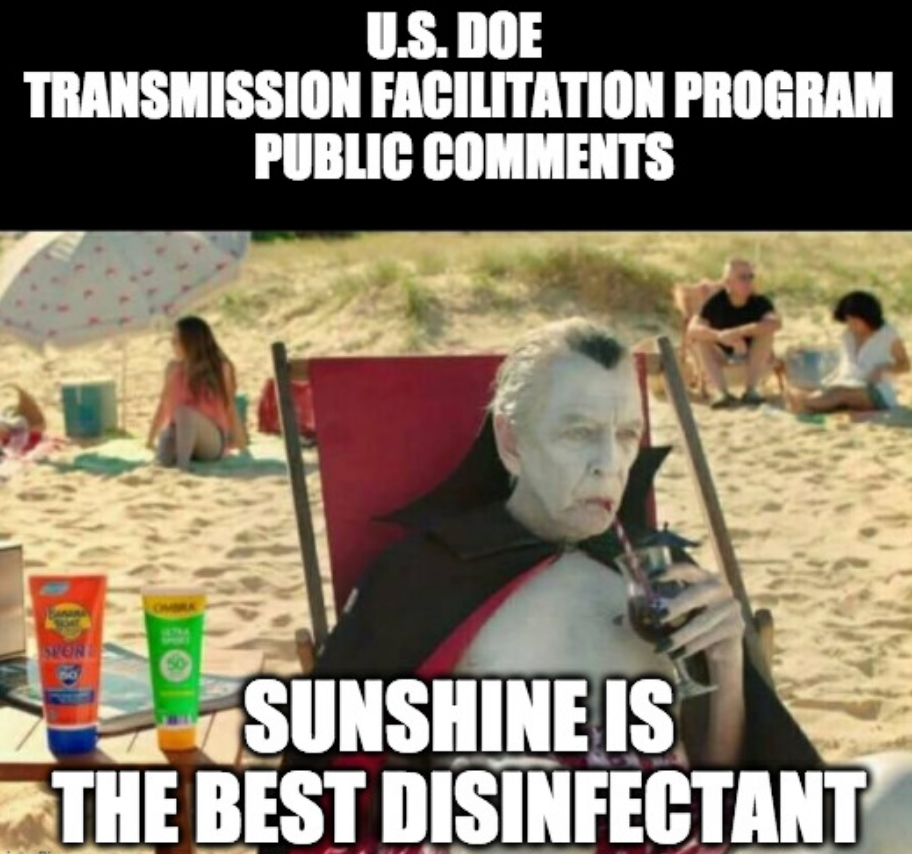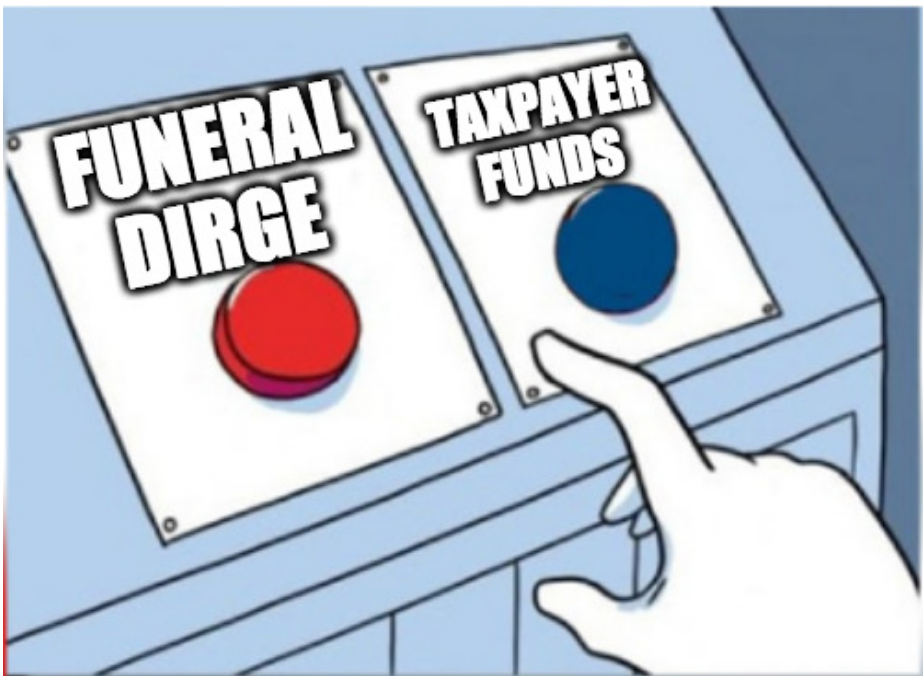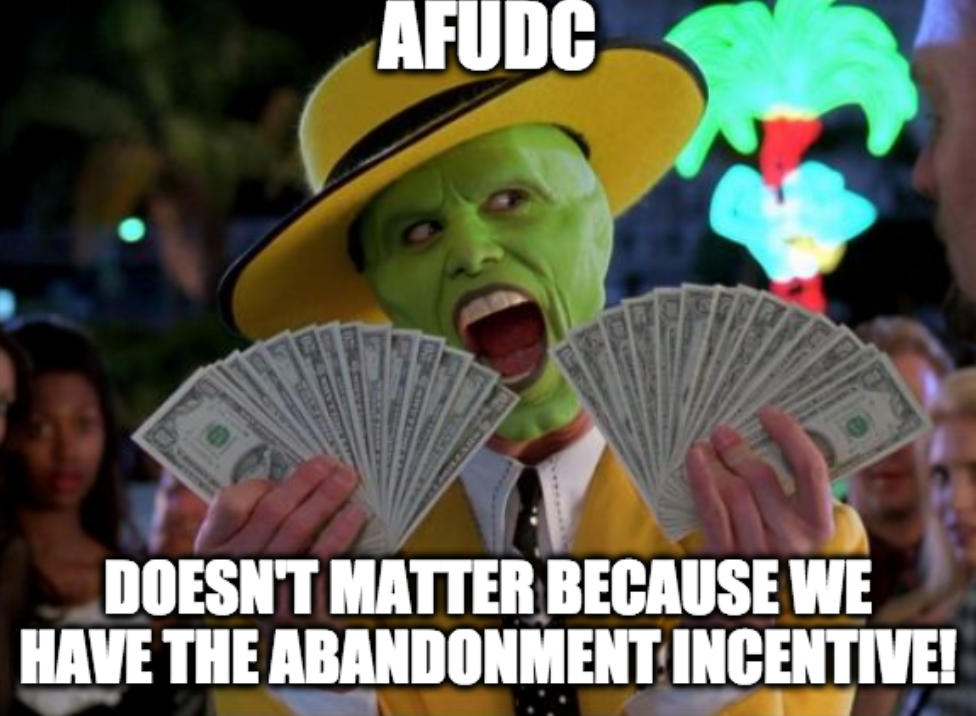Over the last couple of years, FERC has issued several notices of a proposed rulemaking entitled "Building for the Future Through Electric Regional Transmission Planning and Cost Allocation and Generator Interconnection". That's word salad for building a whole bunch of new transmission for the purpose of connecting renewable energy installations around the country. Who says we need a whole bunch of new generation and transmission? There isn't a real reason, it's just about pushing the green agenda. Build it and they will come.
Except they won't. Who is going to buy all this renewable energy? Is it the utilities whose current generation has been shut down and may be facing blackouts? That's a false narrative. Current generation shortages stem from the intermittent nature of wind and solar. It cannot be depended on to generate when needed. Wind and solar only generate when nature produces their fuel. Build a lot of wind and solar, price fossil fuel generators out of the market so they shut down, and suddenly you have shortages at the most inopportune times... like during extreme heat or cold. Some geniuses believe they can import electricity from other regions when that happens. Except those regions with excess generation are fossil fuel heavy. What happens when all regions overbuild renewables and we're at "net zero"? There's nobody to borrow from. Then the lights go out. This is a future train wreck from which we may never recover.
FERC is ignoring the train whistle in the distance, preferring to believe that if they force the building of enough new electric transmission, all the borrowing can happen between renewable generators. To this end, FERC wants to encourage the building of new renewable generators by building new transmission to newly designated "resource zones".
What are "resource zones"? In FERCenese, they are "geographic zones that have the potential for the development of large amounts of new generation, particularly renewable resources." The designation is to be made by a FERC-jurisdictional regional transmission planner, after considering the following:
- Assess geographic zones that have the potential for the development of large amounts of new generation, particularly renewable resources.
- Use best available data, including atmospheric, meteorological, geophysical, and other surveys, to identify geographic zones with potential for development of large amounts of new generation.
- Identify known siting, permitting, or other anticipated development challenges or opportunities associated with the draft geographic zones.
- Assess generation developers’ commercial interest in developing generation within each designated geographic zone.
- Consider a generation developer’s leasing agreements with landowners within the zone.
- Consider a generation developer’s power purchase agreements with a credit-worthy counterparty associated with generation within the zone.
OASIS?
Maybe this?
OASIS is an acronym that stands for Open Access Same-Time Information Systems used by the electric industry that provide information about available transmission capability for point-to-point service and a process for requesting transmission service on a non-discriminatory basis. OASIS enables transmission providers and transmission customers to communicate requests and responses to buy and sell available transmission capacity offered under the Open Access Transmission Tariff.
Say what? You've never been to this oasis, and you're likely to spend years wandering through the desert before you find it, if ever.
FERC thinks "relevant federal and state siting authorities" and transmission and generation builders are the only "stakeholders" who shall be involved in commenting on a proposed zone. You landowners at ground zero are not invited to the party. Neither are your local governments, who have authority over zoning restrictions for siting new industrial electric generation facilities. As folks on the ground have found over the years, zoning restrictions are what makes or breaks the siting of new generators.
So, what happens when FERC and its preferred "stakeholders" designate a zone that the local government shuts down through restrictions or moratoriums? There is no authority for these entities to override local government siting requirements, however, the zone designation requires regional transmission planners to plan and build new electric transmission to the zone in order to enable the generators that cannot be sited or built. In that instance, the zone will be the desert where no generation oasis can be located. We will have paid to build a literal road to nowhere.
Poor planning, FERC. Get your head out of the sand. Building transmission to zones that do not want to live in industrial energy generation facilities is pure fantasy.
Do you want the federal government to designate a "zone" to build industrial electric generation plants in your neighborhood? Feel free to comment. Comment deadline has been extended through August 17, although Federal Register has not yet caught up with that. You may also upload your comments to FERC directly. Instructions are here.
Tell FERC you don't want a zone in your backyard, community, or county.






 RSS Feed
RSS Feed